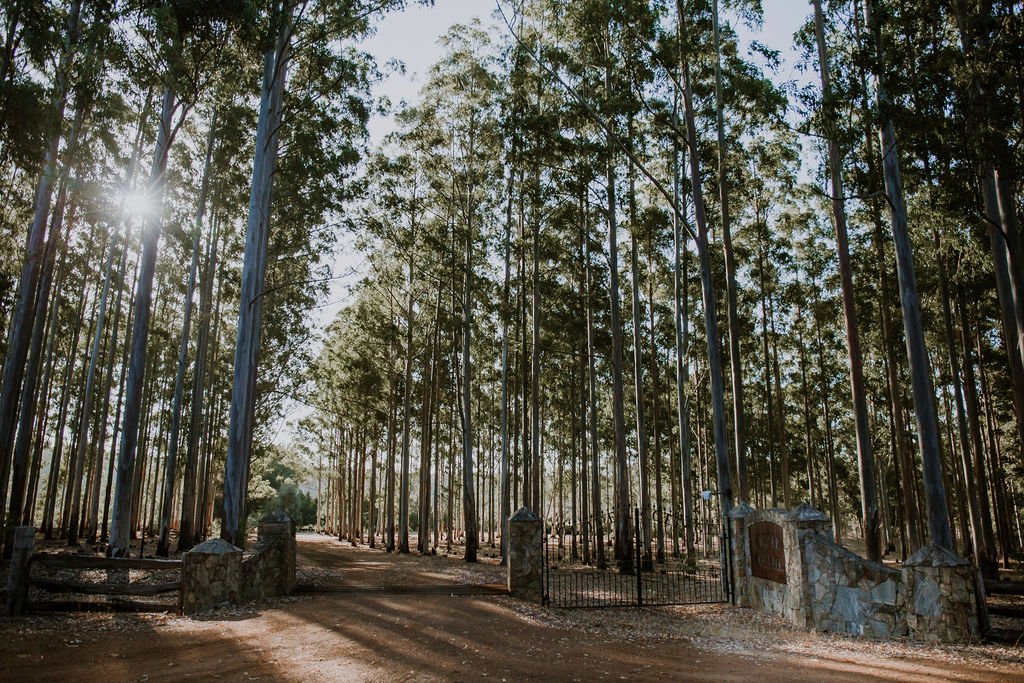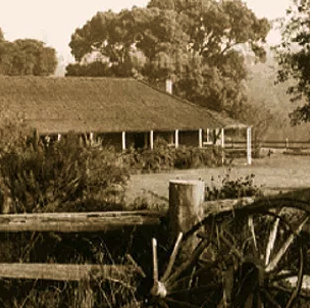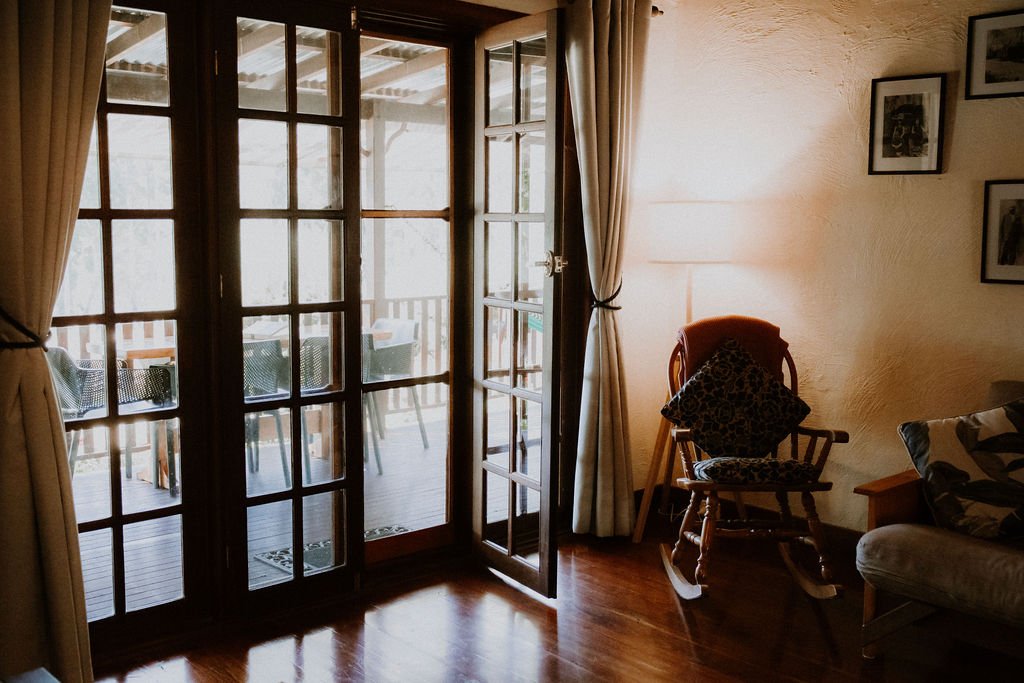
A place rich with history and tradition
Clover Cottage is nestled on the banks of the Warren River and was settled by Peter and Ellen Wheatley in the 1860s.
Clover Cottage was built in 1875 by local builder Jack Haynes using local hand fired bricks and a jarrah shingled roof. This beautiful cottage has been restored with loving care by Paul Thomsett complete with the original bricks and shingles.
Clover History
-

Original jarrah shingles can still been seen on the verandah today
-

Clover Cottage was fully restored in 2011.
-

Remaining farm implements
-

Remains of the original Upper Warren bridge
-

Mudbrick Barn built 1983
-

Entrance to Clover Cottage
The farm
By 1880s the district felt there was a need for a school to be built to cater for the educational needs of the growing families in the area.
-
Four Pioneer families joined skills and finances to build a little school on a site in the middle of the forest, which was equal distance from the four families. Peter Wheatley, Walter Blechynden, John Mottram and Arthur Leeuwin Clarke shared the cost of clearing, construction and fencing of the new school/ church. The school was built with hand-fired bricks and jarrah shingles like Clover Cottage. Jack Haynes was the builder. When the school was opened, the first teacher was Miss Kate Logue. You can take a walk down the original Wheatley coast Road track and visit the schoolhouse which still stands in all its glory deep in the jarrah forest. It has recently been restored by the local community.
The school was the focal point in the community being the school during the week and the church every Sunday. In 1929, the building was dedicated to a church called St Mark and under the diocese of the Church of England in Bunbury.
Mrs Wheatley led a very busy life bringing up her children and attending to all the household chores. She baked bread, made butter and jam and preserved fruit. She made all the clothes for the children and all the men’s working clothes too. Sewing was all done by hand at the time. Other chores were to make soap and candles from tallow. Then there was a flower and vegetable garden to attend. During the milking season, there were endless basins to be set and left for the ream to rise. Finally the butter had to be churned. The curing of the bacon and ham was another task for the housewife. The usual round of washing, ironing and mending was somehow fitted into this already full working.
Picnics were the main entertainment for young and old. Three or four families joined forces on Sundays, the bigger boys and girls all riding horseback. The girls were as keen as the boys on riding and shooting, but they did not join on the swimming parties on the river. Cricket matches were held once a month at different homesteads, larger families often making a team of their own. A dance at a neighbour’s barn to the music of an accordion was a real treat with the girls riding in with their dance frocks tied up in bundles on the pommels of their saddles. Church was held once a month at different homes in turn and everyone came along. After things became more civilised, a team delivered mail once a week at a neighbour’s house. These neighbours, the Gibletts, used to keep open house every mail day and insisted that everyone that came in should put their horse into their stable, whilst he himself, was ushered in to join in a family meal around a big old table.
A trip down to the family’s leasehold land on the south coast provided a summer holiday for the women and children and a working holiday for the men. Several families went down together and lived in big tents on one campsite. There might be as many as 70 men, women and children on the site. More picnic and sport meetings were held and it was of the life the children looked forward to all year. Fishing was a special feature of these coastal holidays.
Guests at Clover Cottage will enjoy adventuring down the same coastal route, which is aptly named Wheatly Coast Road, and discover the rugged isolated beauty of Salmon Beach and Windy Harbour.
The cattle Peter sold to the butchers in Albany were what brought in the golden sovereigns for Peter Wheatley. His butter just about paid for the stores and no more. In the early years before butter factories, settlers who had money didn’t bother to milk more cows than enough to provide for their own needs in mild, butter and cream. Droving the cattle to Albany was a task that fell to Peter’s sons, as they grew older. One of them would ride away driving some of his Father’s beasts and on the way collected more beasts from neighbours at an agreed figure per head. In Albany he sold the whole herd to the butcher, sometimes for as much as 3,000. He’d then put his sovereigns into a leather bag and set off home. The bag was so heavy that he would have drowned if he had attempted to swim the rivers with it in his hands. Instead he tied it securely to his saddle, dismounted, stripped, pushed his horse in and swam across holding its tail. Once safely on the other side, he looked even more anxiously for his sovereigns, than his bundle of clothes. He paid his dues to his neighbours and his Father and kept the balance for his trouble.
“A really nice, quiet peaceful place that we are sure to return to. Fishing was great, caught and returned 8.”


